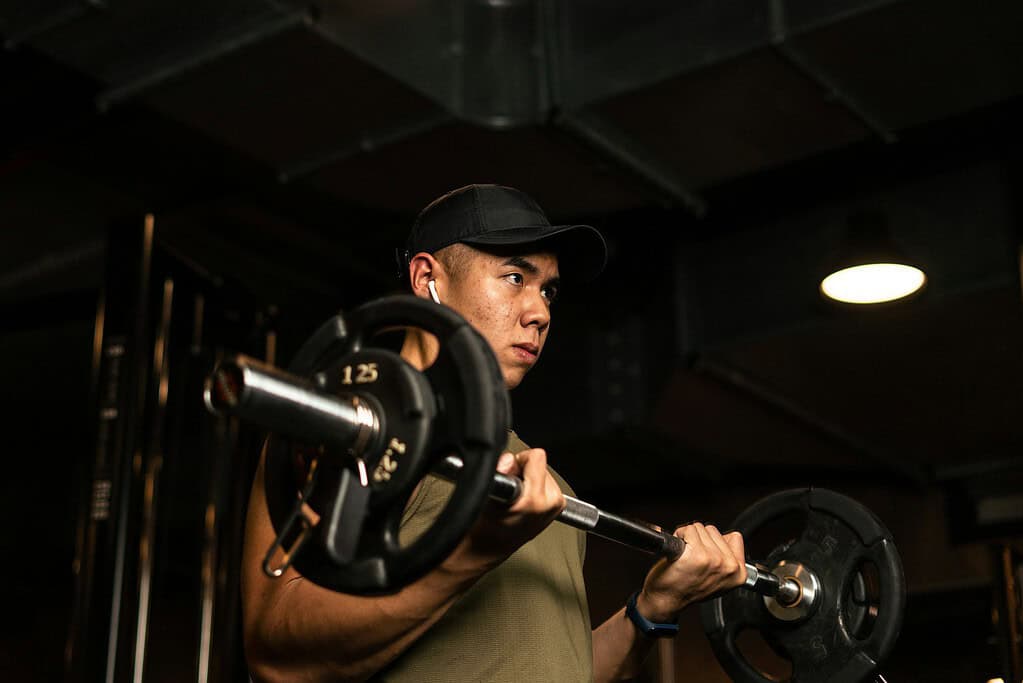Are you someone who loves both running marathons and lifting heavy weights? If so, you had better be a hybrid athlete.
Being a hybrid athlete means you get the best of both worlds – strength and endurance.
Imagine having the stamina to run a 10K and the power to crush a weightlifting session. Sounds awesome, right?
So, how about we take a good look at the fun and effective strength training routine for hybrid athletes?
Let’s get ready to build some serious muscle and boost our endurance at the same time:
Killer Strength Training Routine For Hybrid Athletes

1. Full-Body Strength Workouts
Day 1: Lower Body Focus
- Squats: 4 sets of 6-8 reps
Squats are fundamental for building overall lower body strength. They engage the quadriceps, hamstrings, glutes, and core, promoting stability and power.
- Deadlifts: 4 sets of 5-7 reps
Deadlifts are excellent for developing posterior chain strength, targeting the back, glutes, and hamstrings. They also improve grip strength and overall functional fitness.
- Lunges: 3 sets of 10 reps per leg
Lunges enhance balance and unilateral leg strength, helping to correct muscle imbalances and increase mobility.
- Leg Press: 3 sets of 10-12 reps
The leg press isolates the leg muscles, allowing for heavier weights and focused muscle development without the strain on the back.
- Calf Raises: 4 sets of 15 reps
Calf raises strengthen the calf muscles, which are crucial for running, jumping, and overall lower body stability.
Day 2: Upper Body Focus
- Bench Press: 4 sets of 6-8 reps
The bench press is a primary movement for building upper body strength, targeting the chest, shoulders, and triceps.
- Pull-Ups: 4 sets of 5-7 reps (use assistance if needed)
Pull-ups are vital for back and bicep development, improving upper body pulling strength and shoulder stability.
- Bent Over Rows: 3 sets of 8-10 reps
Bent over rows enhance back thickness and strength, balancing the pushing exercises and promoting good posture.
- Shoulder Press: 3 sets of 8-10 reps
Shoulder presses strengthen the deltoids and triceps, contributing to overall shoulder health and upper body power.
- Bicep Curls: 3 sets of 12 reps
Bicep curls isolate and build the bicep muscles, aiding in arm strength and endurance.
- Tricep Dips: 3 sets of 10-12 reps
Tricep dips target the triceps and chest, enhancing pushing power and arm definition.
2. Incorporating Compound Movements
Compound movements are essential for building functional strength and muscle mass.
Exercises like squats, deadlifts, and bench presses should be the cornerstone of your strength training routine.
These movements engage multiple muscle groups and joints, promoting overall strength, stability, and athletic performance.
3. Progressive Overload
To continue making gains, it’s crucial to gradually increase the weight you lift.
Aim for a small increase in weight every week or two, ensuring your muscles are constantly challenged and adapting.
Progressive overload stimulates muscle growth, increases strength, and improves performance over time.
4. Balance with Endurance Training
Given the dual nature of hybrid athletes, it’s important to balance strength training with endurance activities.
On days you’re not lifting weights, engage in running, cycling, or swimming. This not only enhances cardiovascular fitness but also aids in muscle recovery.
Incorporating interval training and steady-state cardio will improve your aerobic and anaerobic capacity.
5. Recovery and Rest
Recovery is crucial for hybrid athletes. Ensure you have at least one rest day per week and prioritize sleep, hydration, and nutrition.
Active recovery activities like light jogging, stretching, or yoga can help keep muscles loose, reduce soreness, and promote blood flow.
Adequate recovery prevents overtraining and reduces the risk of injury.
6. Nutrition and Hydration
Fuel your body with a balanced diet rich in proteins, healthy fats, and complex carbohydrates.
Proper nutrition supports muscle repair and growth, providing the necessary energy for intense training sessions.
Consuming protein-rich foods aids in muscle recovery, while carbohydrates replenish glycogen stores.
Staying hydrated is essential for maintaining performance and overall health.
Conclusion
Here’s the strength training routine that’s perfect for hybrid athletes like you.
The key is to balance your workouts, keep pushing yourself, and most importantly, have fun.
If you’re hitting the weights or running your favorite trail, you’re building a stronger, fitter, and more versatile you. So, keep pushing the limits. You’ve got it.



